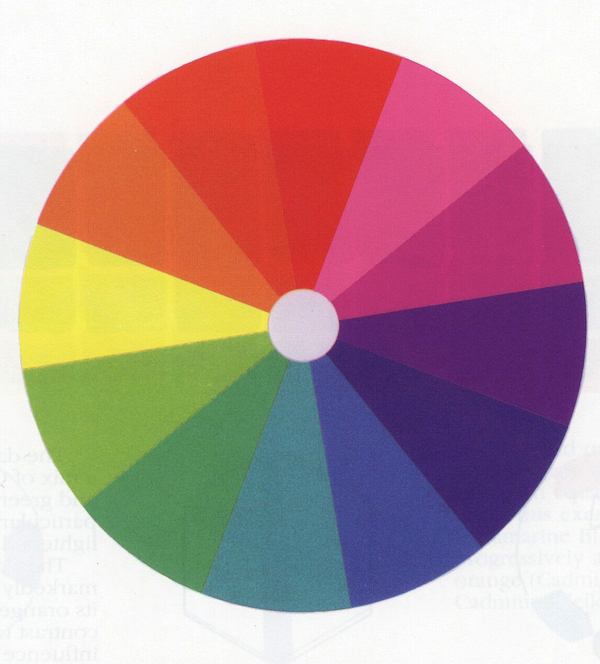- Home
- Colour Theory
- What Are the Secondary Colors
What are the secondary colors?
During art class at school, your teacher may have asked, "What are the secondary colors?"
Did that information stick in your head? I asked my husband the question while out on a walk today, and he got two out of three correct.
So let's go back a step. Do you know how to make secondary colors?
Understanding the basics: primary colors
The simple answer is that you mix two primary colours in equal proportions. Uh-oh there's another term you may have forgotten.
There are three primary colors - red, yellow and blue. These colors are unique in that they cannot be created from any other colors. However, ALL the other colors contain at least two of them.
What are the secondary colors?
I used the word "mix" above, but of course when we are talking about colored pencils we can't physically mix pencil pigment like we can paint (unless they are watercolour pencils). Instead we lay down one color on top of another and our eyes mix them for us. This is called optical mixing and I explain it further on the layering colored pencils page.
- So if we put a layer of blue over a layer of yellow we get a green.
- If we put a layer of red over a layer of yellow we get an orange.
- And if we put a layer of blue over a layer of red we get a purple.
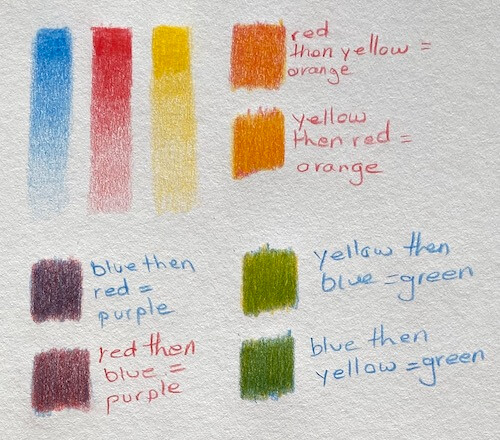
For the illustration above I used a cheap sketch book which is why you can see the white speckles in the long bars of blue, red and yellow. In hindsight this was a bad move as I couldn't get many layers of pencil down before the paper resisted my attempts to go further. However, it shows what I am trying to put across.
The pencils I used were Faber Castell Polychromos, in the following colors...
- Blue - Cobalt Blue Greenish
- Red - Pale Geranium Lake
- Yellow - Dark Cadmium Yellow
The swatches of orange show the same yellow and red layered but I started with red for one and yellow for the other. There is a slight difference in the finished result, obvious in the original, but depending on your monitor you may not see it.
The "purple" and green swatches were worked in the same manner.
Of course it is not possible to know if I laid exactly the same proportions as the pressure of the pencil on the paper in each layer may have varied slightly.
The role of tinting strength
A factor to keep in mind when "mixing" colors is the tinting strength.
What do I mean by this? Tinting strength refers to the ability a color has to influence the resulting hue when two colors are layered. Some colors, like blue, have a high tinting strength, meaning they're dominant and can quickly overpower other colors in the mix, or layer stack.
So if you are trying to create green by layering yellow and blue, you will likely get a better result if you start with a yellow layer.
Therefore, it is always a good idea to plan out your colour layers on a scrap piece of paper before you add them to your drawing, just in case! As colored pencils are translucent you won't be able to cover up errors by adding further layers. Erasing back to white paper is also not always possible, due to the tinting strength.
Introducing color temperature
Did you know that colors can be warm or cool? This concept is a fundamental part of color theory. Even within a single color, like red, there can be both warm and cool variations. Bear with me here, this is relevant to the original question "what are the secondary colors".
Visualize a lovely juicy red tomato. Can you see the sunshine glowing through the orangy red skin? Does it make you think of hot summer days? This orangy red is a warm red.
Now put that virtual tomato down and pick up a punnet of raspberries. They are also red, but much less intense, more of a burgundy tone, and in this instance you could call it a cool red.
Now do the same thing with a lemon and a ripe banana (but not one that has gone brown). The lemon might lean towards a greenish yellow (cool) whereas the banana is warmer and more of a sunny yellow.
Let's not leave out the blues. A cool blue has a hint of green, while a warm blue has a touch or red or purple in it.
It is important for me to note here, that color temperature is a subjective concept. What you may see as a warm color, I might perceive as cool. It is necessary to experiment with color combinations to see what works best for you.

I took the photo above into Photoshop and used the eyedropper tool to select areas of the image. I then used the brush tool to drag out a blob of that color. This makes it easier to see the colour in isolation and decide whether it is a warm or cool green.
I left one blob unlabelled so you can decide for yourself what color temperature you are seeing. You may also see the blob I labeled Yellow as a yellow green. As I mentioned above we all see colour differently.
Perhaps this RGB screenshot from Photoshop will help?
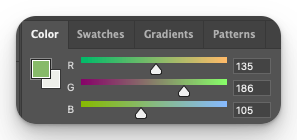
Warm and cool primaries give different results
Remember I answered the question, what are the secondary colors, by saying they are the colors created by mixing two of the primaries? Well by picking reds, blues or yellows that are either warm or cool, you can create a whole variety of oranges, purples and greens!
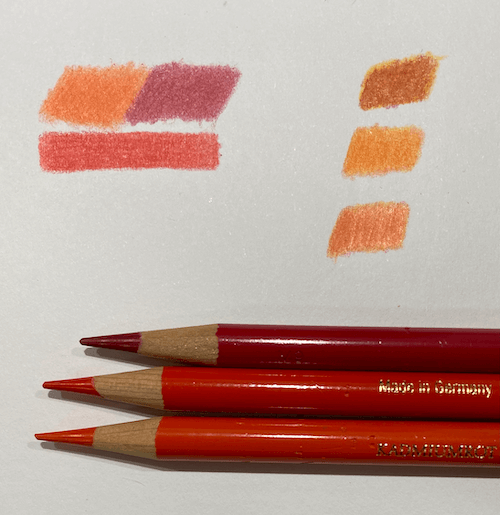 Warm and cool reds, and the oranges they create when mixed with yellow
Warm and cool reds, and the oranges they create when mixed with yellowIn the above photo you will see patches in the top left of the three different reds, a warm (furthest left) and cool (right) in the top row, and the primary red we used earlier, for the bar underneath.
On the right you will see each of the three reds mixed with our primary yellow and how the resultant "oranges" differ.
My reds were all from the Polychromos range of pencils, as follows...
- Primary - Pale Geranium Lake (121)
- Warm - Light Cadmium Red (117)
- Cool - Madder (142)
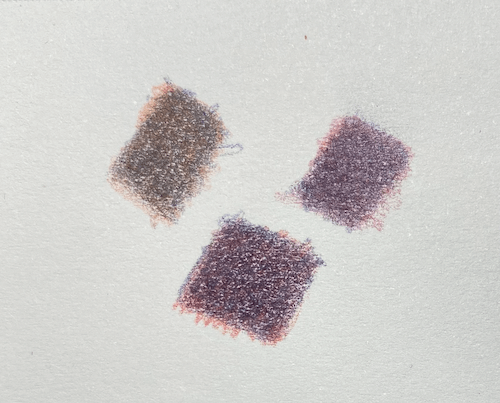 A warm red mixed with all three blues gives variations on purple
A warm red mixed with all three blues gives variations on purpleThe blues I used were Polychromos...
- Primary - Cobalt Blue Greenish (144)
- Warm - Indanthrene Blue (247)
- Cool - Bluish Turquoise (149)
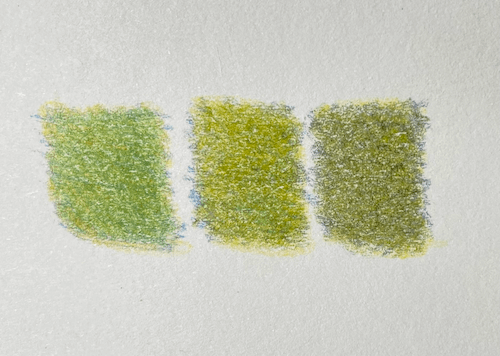 Greens created with the same three blues as above, and the yellow below
Greens created with the same three blues as above, and the yellow belowFor these samples I used just a single yellow...
- Yellow - Dark Cadmium Yellow (108)
Time for you to practice
Pick three red, three blue and three yellow pencils from your collection and try layering to see the range of secondary colors you can create. Make a note of the color name or number of each pencil that you use and whether you think they are cool, warm or in between.
If you do this in a sketch book you will have made yourself a swatch chart.
I hope this page has helped to give you an answer to the question "what are the secondary colors".
